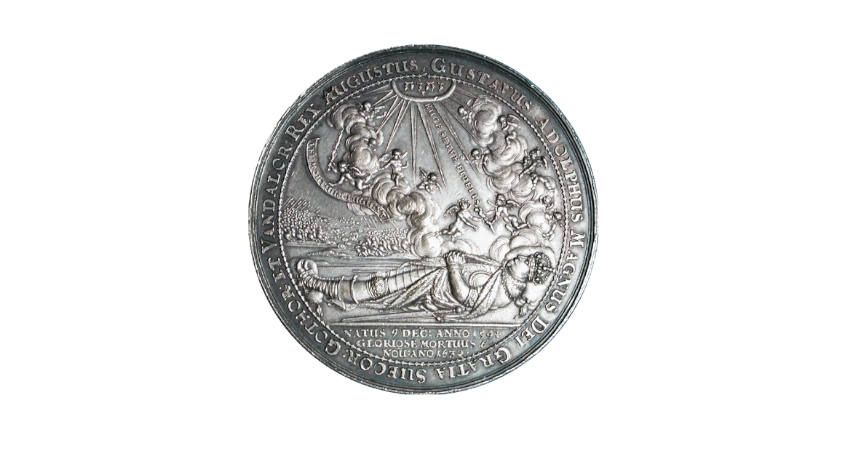Germanisches Nationalmuseum, Münzkabinett
Wenn es kein Logo gibt, wird diese Spalte einfach leer gelassen. Das Bild oben bitte löschen.
(Dieser Text wird nicht dargestellt.)
Kartäusergasse 1
90402 Nürnberg
Tel: +49 (0)911-1331-0
Das Germanische Nationalmuseum ist das größte kulturhistorische Museum Deutschlands. Das Münzkabinett umfasst rund 150.000 Objekte, davon 100.000 Münzen, 15.000 Banknoten und Notgeldscheine, 20.000 Medaillen, Wertmarken und 5.000 Zeichen, über 6.000 Siegel und Prägestempel sowie Marken, Markenzeichen, Medaillen, Orden und Ehrenzeichen und antike Gemmen. Ein kleiner Teil davon wird in verschiedenen Räumen des Museums ausgestellt, wo sie mit Texten in deutscher und englischer Sprache in breitere historische Zusammenhänge eingebettet sind. Weitere Objekte der Sammlung können nach Terminvereinbarung im Studiensaal besichtigt werden.
Im Gegensatz zu den meisten großen numismatischen Sammlungen baute die Münzsammlung des Museums nicht auf einer alten königlichen Sammlung auf, sondern wurde erst mit der Gründung des Museums im Jahr 1852 angelegt. Der Schwerpunkt der Sammlung liegt im deutschsprachigen Raum und umfasst die Zeit der Karolinger (8. und 9. Jahrhundert) bis in die Gegenwart.
Kunst und Kultur der Karolinger
Karl der Große, seit 768 König der Franken, führte den Denar als Standardmünze für das gesamte Reich ein. Diese Münzen tragen seinen Namen und die Stadt, in der sie geprägt wurden. Beispiele, die in Raum 4 ausgestellt sind, sind die Silberdenare Karls des Großen mit mehreren Jahreszahlen und Münzstätten (Mailand, Bourges und Paris), Ludwigs des Frommen (Paris, 814-840), Lothars I. (Pavia, 840-855), Pippins I. oder II. (Melle, 814-838 oder 839-852) und Karls des Einfältigen (Straßburg, 898-923).
Münzen der römischen Eisenzeit
Zu den römischen Münzen, die seit 216 v. Chr. geprägt wurden, gehören der Silberdenar, der bronzene Sesterzius und der Kupferas. Während der Denar ursprünglich aus reinem Silber bestand, führte die Entwertung bis 260 n. Chr. zu einer galoppierenden Inflation. Reformen von Diokletian (284-305) und Konstantin (307-337) führten einen stabileren Goldstandard ein.
In Raum 8 sind 62 Münzen aus dem Römischen Reich ausgestellt, beginnend mit dem Aureus des Augustus (27 v. Chr.-14 n. Chr.) und endend mit der silbernen ½ Siliqua von Severus III. (461-465). Obwohl es noch weitere Kaiser des Weströmischen Reiches gab, werden keine Münzen als Beispiele genannt. Für 31 der genannten römischen Kaiser, die zwischen Augustus und Romulus Augustus (475-476) regierten, werden keine Münzen bereitgestellt.
Medaillenkunst und Abzeichen
Die erste Ebene des Museums hat mehrere Räume (104, 106, 107, 115, 118 und 121), in denen Medaillenkunst aus dem 16. Jahrhundert ausgestellt ist. Die Porträts von Albrecht Dürer beeinflussten die zeitgenössischen Medaillen- und Medaillon-Hersteller, insbesondere jene in Nürnberg, stark. Raum 118 zeigt eine Auswahl von Grabporträtmedaillen von Künstlern wie Sebastian Dadler, Matthes Gebel und Christoph Ritter.
Nach Einführung der Reformation konnten die Armen vielerorts nicht mehr von den Klöstern unterstützt werden. Bettler mussten ein Abzeichen auf ihre Kleidung nähen und erhielten Token, die sie gegen Brot eintauschten. Beispiele für dieses Abzeichen und diese Token befinden sich in Raum 107.
Dieser Text wurde von Howard M. Berlin geschrieben und erstmals 2014 in seinem Buch The Numismatourist veröffentlicht.











